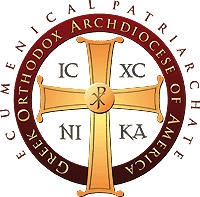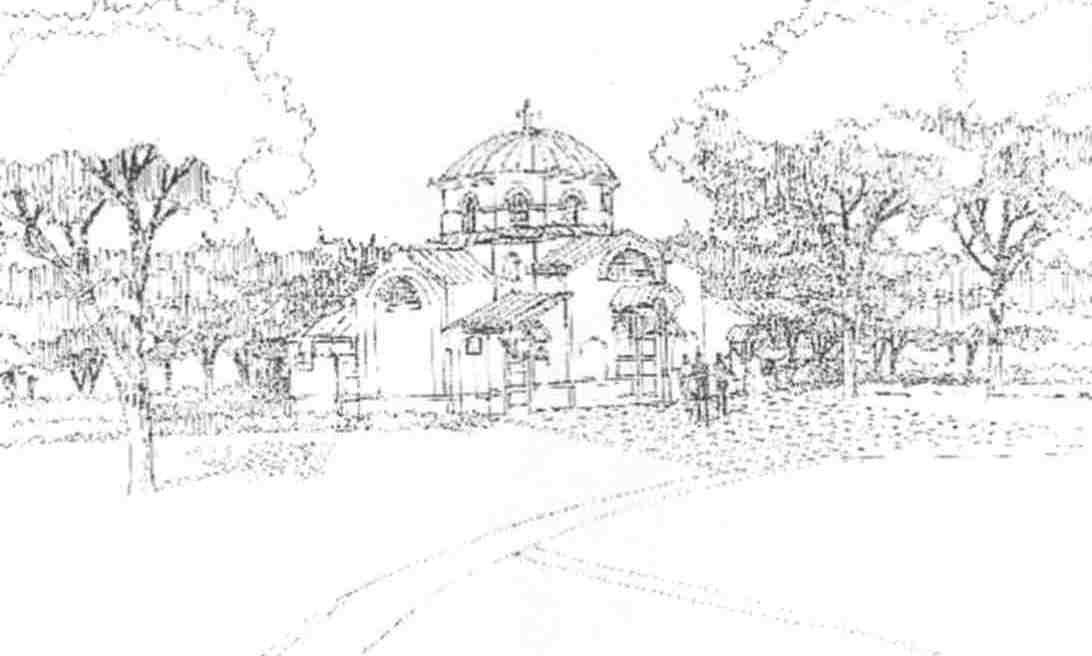 |
|
 |
Green Parishes: |
Each year, on Sept. 1, Orthodox Christians throughout the world celebrate the beginning of the new ecclesiastical calendar. The same date also was also declared “the day of prayer and preservation of the natural environment” almost 20 years ago (1989) by the Ecumenical Patriarchate in Constantinople. As a result, it is currently observed as such by all Orthodox Churches and even by member communions of the World Council of Churches. Thus, September marks an opportunity for all Orthodox parishes to explore and practice the powerful ideas of Ecumenical Patriarch Bartholomew to implement green concepts so meaningful for the welfare of humanity and the survival of our planet. Perhaps the most common reason that a parish resists “going green” is because the initial investment is commonly perceived as prohibitive, |
 |
|
while the rewards only minimal. Other reasons for resisting ecologically-friendly designs is that parishes generally underestimate the significance and difference that one community can provide in responding to the environmental crisis as well as in saving energy costs. Any parish, particularly those that already have an existing building of worship, may want to consider contacting their local utility company for a survey and inspection of their facilities. Many utility companies provide professional advice for energy conservation and in many cases provide upgraded equipment at modest cost. There are also ecumenical organizations that are willing to offer ideas and guidance to those interested in pursuing the green way. Indeed, there are numerous factors that determine the right energy conservation measures for a particular parish, including local climate, building size, use of structure, and how often it is fully or partially occupied. Your parish may find it of interest to visit the website, www.coned.com and click on “Go Green”. The website summarizes 100 very simple tips that will save your parish substantial costs, and help the environment. Moreover, parishes would enjoy looking at the website of the Greek Orthodox Archdiocese (www.goarch.org), which has a specific booklet with Scriptural and Patristic sources, parish and personal challenges, as well as 100 practical tips for an Orthodox faithful, family, and parish. One of the most obvious and cost-efficient approaches when building a new parish complex is to create multi-use spaces. Except, for instance, where a community requires a very large banquet facility, the design should combine the banquet facility together with the gymnasium. The majority of parishes frequently dismiss this idea because they maintain that combining both functions will ultimately produce neither an elegant banquet facility nor a functional gymnasium. For those who are skeptical in this regard, a visit to the James W. Pihos Cultural Center of the Annunciation Church in Milwaukee will convince them that multi-use spaces can in fact be very successful. In this Milwaukee community, the concept has produced – in one and the same space – a gymnasium designed to accept a degree of abuse, while at the same time creating an ambience of elegance for the banquet facility, all in one space. Such a concept of a multi-use edifice translates into substantial energy savings in Milwaukee, particularly with regard to savings for heating and coolAIAing 6,500 square feet of building space. A gymnasium and banquet hall have a height of 24 feet, which means that the space is equivalent to a building twice the size. The secret of any multi-use space lies in the design of a lighting scheme that complements all of the proposed activities for the area, while having sufficient adjacent storage capacity that will greatly assist the process for multi-use. This same concept, combining the gymnasium and banquet facility, is presently being developed for the parish of St. Demetrios in Merrick, N.Y., as well as for the St. Nicholas Family Life Center in St. Louis. From past projects, it has been proven that a reasonable amount of energy can be conserved simply by adopting common sense ideas that will not add significantly to the overall cost of the project. Other green design innovations may increase the initial cost; but ultimately they save substantial energy for the parish to realize a payback already by the first year. The very first parish in our Archdiocese that has given serious consideration to an environmental approach is St. Iakovos in Valparaiso, Ind., which is located in the Chicago metropolis. There, the entire community has warmly embraced the environmental concept, which promises to be the most energy-efficient and environmental-friendly design of our Archdiocese. Once again, at first, community members were concerned about additional costs involved in “going green.” However, in the end, these same members were most concerned to learn “how they can be part of the environmental solution,” which sealed the decision of the parish to assume the direction it took. The St. Iakovos green design includes the following elements, which should be considered as standard for every church in the future: First, the site design greatly exceeds federal standards for treatment of storm water. All storm water from areas surrounding the buildings, parking areas and roads is directed to various inlets and piped underground flowing directly into a forebay, namely a basin area filled with plants specifically selected to filter run-off water before it is directed into a storm water detention area. This detention area is a newly designed one-acre pond adjacent to the existing wetland area retained as part of the site design. An additional five acres of land surrounding these storm water facilities are being planted with native grasses and perennials, which will provide further filtration before the storm water enters the detention pond and finally exits the site as pure clean water. Second, a grey-water system has been designed to collect rainwater from the building roofs, to direct the rain water to storage tanks, and to be reused for flushing toilets and site watering. Based on the average yearly rainfall in Valparaiso, Ind., the grey-water system has the potential to collect approximately 200,000 gallons of rain water annually. Projected occupancy at St. Iakovos assures that approximately 100,000 gallons of domestic water usage will be conserved each year because of this grey-water system. If only 10 parishes of the Archdiocese included such a grey-water concept into their plans, there would be an annual savings of a million gallons of domestic water. The same grey-water concept designed for the parish of St. Iakovos has also been embraced by the St. Demetrios community of Merrick, where it will be incorporated into the new cultural center. Rainwater at St. Demetrios will be captured on the roof of the cultural center’s, which is shaped like a wave. Perhaps those who do not understand the significance of this particular environmental savings would appreciate its significance when the price of drinking water reaches the present cost of fuel; without appropriate action of conservation today, this will certainly be a reality in the not-too-distant future. Third, natural lighting plays an important part in the design consideration and plan for St. Iakovos. The entire cultural center – which will consist of classrooms, an administration area and social areas, encompassing 18,000 square feet – has been planned around an open court allowing natural light to illuminate every classroom and all other occupied spaces. The careful orientation of the structure permits maximum natural light into all facility spaces. Even toilet facilities have been designed with skylights providing natural light and illuminating these spaces all day long without any artificial lighting whatsoever. The concept of natural lighting was not any idea of contemporary genius or some revolutionary innovation. It was actually derived from classical Greek and Roman home designs, which were constructed around an open atrium in order to maximize the flow of natural light into the house. In these ancient homes, shutters reduced the heat of the afternoon sun. Today, our technology provides similar approaches for maximizing natural daylight while minimizing heat gain. As for improving existing structures, there is high-performance solar coating for glass areas offering immediate energy savings to the building. Finally, occupancy lighting sensors, which dim and shut off lights when spaces are not occupied, save a substantial amount of electric consumption. The lighting design at St. Iakovos is substantially more efficient than that required by standard state codes. There is no doubt that planning, designing and building houses of worship, which not only protect God’s creation but also preserve the planet’s resources, is the proper way forward for Orthodox Churches in the future. Such an approach not only dignifies the uncreated Creator of all people and all things; it honors the material creation which was assumed and saved by Christ, who “became flesh” for the life of the world. It behooves us to move forward together, learning from one another in the true spirit of sharing as Orthodox faithful and parishes in this blessed land. Steven Papadatos is founder of Papadatos Partnership LLP, a New York–based architectural firm. He is an Archon of the Ecumenical Patriarchate. |
|
(Posting date 26 November 2008) HCS maintains an extensive, permanent archives including an entire section on religious news and announcements from the Archdiocese: http://www.helleniccomserve.com/archivearchdiocese.html . For more information about the Department of Religious Education or the Greek Orthodox Archdiocese of America, visit the website of the Archdiocese at http://www.goarch.org or contact the offices located at 8 East 79th Street, New York, NY 10021; (phone) 212-570-3500; (fax) 212-370-3569. The Archdiocese falls under the ecclesiastical jursdiction of the Ecumenical Patriarchate of the Orthdox Church at Constantinople: http://www.patriarchate.org. |
|
|
|
|
2000 © Hellenic Communication Service, L.L.C. All Rights Reserved. http://www.HellenicComServe.com |
|
